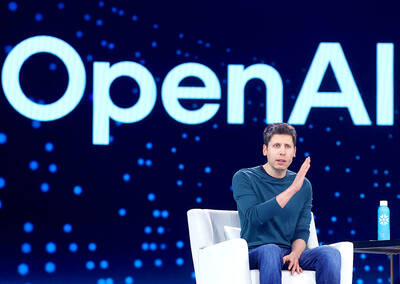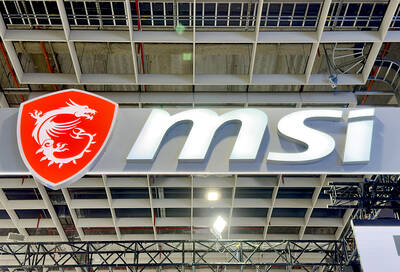Diabetes devices might be having their iPhone moment.
For decades, the daily routine of diabetics involved painful needles, finger-pricking lancets and imprecise glucose meters. Now, manufacturers have begun incorporating the slick and user-friendly designs of Silicon Valley, linking to smartphones and other tech devices.
“This is a crossroads for diabetes technology,” said Raj Denhoy, an analyst at Jefferies LLC in New York.
September marked a breakthrough in the US, as regulators approved the first monitoring system that does not need a blood sample, Abbott Laboratories’ FreeStyle Libre.
The new devices do away with fingerpricks, changing an unpleasant, several-times-a-day routine into quiet monitoring in the background through a sensor worn on the back of the upper arm.
Other companies have been left behind. Johnson & Johnson is closing its insulin-pump unit after failing to keep up with Medtronic PLC. DexCom Inc, the leader in glucose-monitoring systems, lost one-thirds of its market value on Sept. 28 after Abbott’s Libre got approval.
During DexCom’s earnings conference call on Wednesday, executives, peppered with questions about the Libre, said the company hopes to introduce its own fingerprick-free device before the end of next year.
The comments about next-generation monitors helped assuage investors’ concerns about DexCom’s prospects, sending the stock up 9.5 percent in the two trading days following the results.
“Companies who succeed will be those who can figure out this convergence of healthcare and technology,” said Arda Ural, a partner at Ernst & Young LLP in New York. “And they’re very different animals to bring together.”
For the winners, the potential market is huge. Diabetes device sales totaled US$14 billion in the US last year, according to Ernst & Young.
For now, the bulk of the sales are to the 1.25 million US diabetes patients with the most severe form of the disease, type 1. Because their pancreas cannot produce insulin, those patients have to constantly monitor their blood sugar and frequently inject themselves with insulin when it spikes.
There is a larger, mostly untapped market: The about 20 million Americans with type 2 diabetes whose body’s ability to use insulin fades slowly over time and who do not regularly use tools to manage their disease.
Yet, some patients have been waiting for decades for better devices to control a condition that, unchecked, can lead to complications including kidney damage and heart disease.
Aaron Kowalski, chief mission officer of diabetes research foundation JDRF, was diagnosed as a 13-year-old in the 1980s. At the time, people measured their glucose by urinating on a stick or placing a drop of blood on a color strip that gave a rough number.
“It was barbaric,” he said.
Abbott’s Libre is to arrive in the US soon. It has already been sold to 400,000 people internationally.
Dexcom, despite the recent blow, has been making strides as well. Its G4 and G5 sensors stick on the body and are only calibrated twice a day with a finger prick.
In September, the San Diego company teamed with Fitbit Inc to link its devices with the latest Fitbit Ionic smartwatch. The companies hope to get the product out next year.
Unlike many consumer products, diabetes devices face two major hurdles — the US Food and Drug Administration (FDA) and health insurers.
Joel Goldsmith, senior director of product innovation at Abbott, said it can take years to get products through long trials required by the FDA before a device can reach the market.
Eventually, the long-term profitability of the technology revolution will depend on coverage. Insurers have increasingly balked at paying for novel devices they do not deem medically necessary.
The Libre is to retail in the US at a similar price as in Europe, which comes to about US$5 a day, including a reader and sensors that must be replaced every 10 days.
A year ago, the FDA approved Medtronic’s MiniMed 670G, an insulin-delivery system that works like an artificial pancreas, ahead of schedule.
However, Medtronic is still waiting for the agency to rule on its smartphone app, Sugar.IQ, which would track meals, blood-glucose levels and insulin dosing, Medtronic head of innovation Huzefa Neemuchwala said.
So far, only DexCom has an FDA-approved app.
California start-up Bigfoot Biomedical is working on an app that would link to the Libre and on an automatic insulin pump.
Cofounder Jeffrey Brewer, whose son was diagnosed with type 1 in 2002 at seven, knows first-hand the need for user-friendly tools.
One day, he hopes, Bigfoot will package devices in a slick box that unwraps like an Apple Inc product.
“This is a category where consumer-focused design is going to explode,” he said. “It’s going to be transformative for the people who live with this disease and my son is going to be the first customer.”

DIVIDED VIEWS: Although the Fed agreed on holding rates steady, some officials see no rate cuts for this year, while 10 policymakers foresee two or more cuts There are a lot of unknowns about the outlook for the economy and interest rates, but US Federal Reserve Chair Jerome Powell signaled at least one thing seems certain: Higher prices are coming. Fed policymakers voted unanimously to hold interest rates steady at a range of 4.25 percent to 4.50 percent for a fourth straight meeting on Wednesday, as they await clarity on whether tariffs would leave a one-time or more lasting mark on inflation. Powell said it is still unclear how much of the bill would fall on the shoulders of consumers, but he expects to learn more about tariffs

NOT JUSTIFIED: The bank’s governor said there would only be a rate cut if inflation falls below 1.5% and economic conditions deteriorate, which have not been detected The central bank yesterday kept its key interest rates unchanged for a fifth consecutive quarter, aligning with market expectations, while slightly lowering its inflation outlook amid signs of cooling price pressures. The move came after the US Federal Reserve held rates steady overnight, despite pressure from US President Donald Trump to cut borrowing costs. Central bank board members unanimously voted to maintain the discount rate at 2 percent, the secured loan rate at 2.375 percent and the overnight lending rate at 4.25 percent. “We consider the policy decision appropriate, although it suggests tightening leaning after factoring in slackening inflation and stable GDP growth,”

Meta Platforms Inc offered US$100 million bonuses to OpenAI employees in an unsuccessful bid to poach the ChatGPT maker’s talent and strengthen its own generative artificial intelligence (AI) teams, OpenAI CEO Sam Altman has said. Facebook’s parent company — a competitor of OpenAI — also offered “giant” annual salaries exceeding US$100 million to OpenAI staffers, Altman said in an interview on the Uncapped with Jack Altman podcast released on Tuesday. “It is crazy,” Sam Altman told his brother Jack in the interview. “I’m really happy that at least so far none of our best people have decided to take them

PLANS: MSI is also planning to upgrade its service center in the Netherlands Micro-Star International Co (MSI, 微星) yesterday said it plans to set up a server assembly line at its Poland service center this year at the earliest. The computer and peripherals manufacturer expects that the new server assembly line would shorten transportation times in shipments to European countries, a company spokesperson told the Taipei Times by telephone. MSI manufactures motherboards, graphics cards, notebook computers, servers, optical storage devices and communication devices. The company operates plants in Taiwan and China, and runs a global network of service centers. The company is also considering upgrading its service center in the Netherlands into a